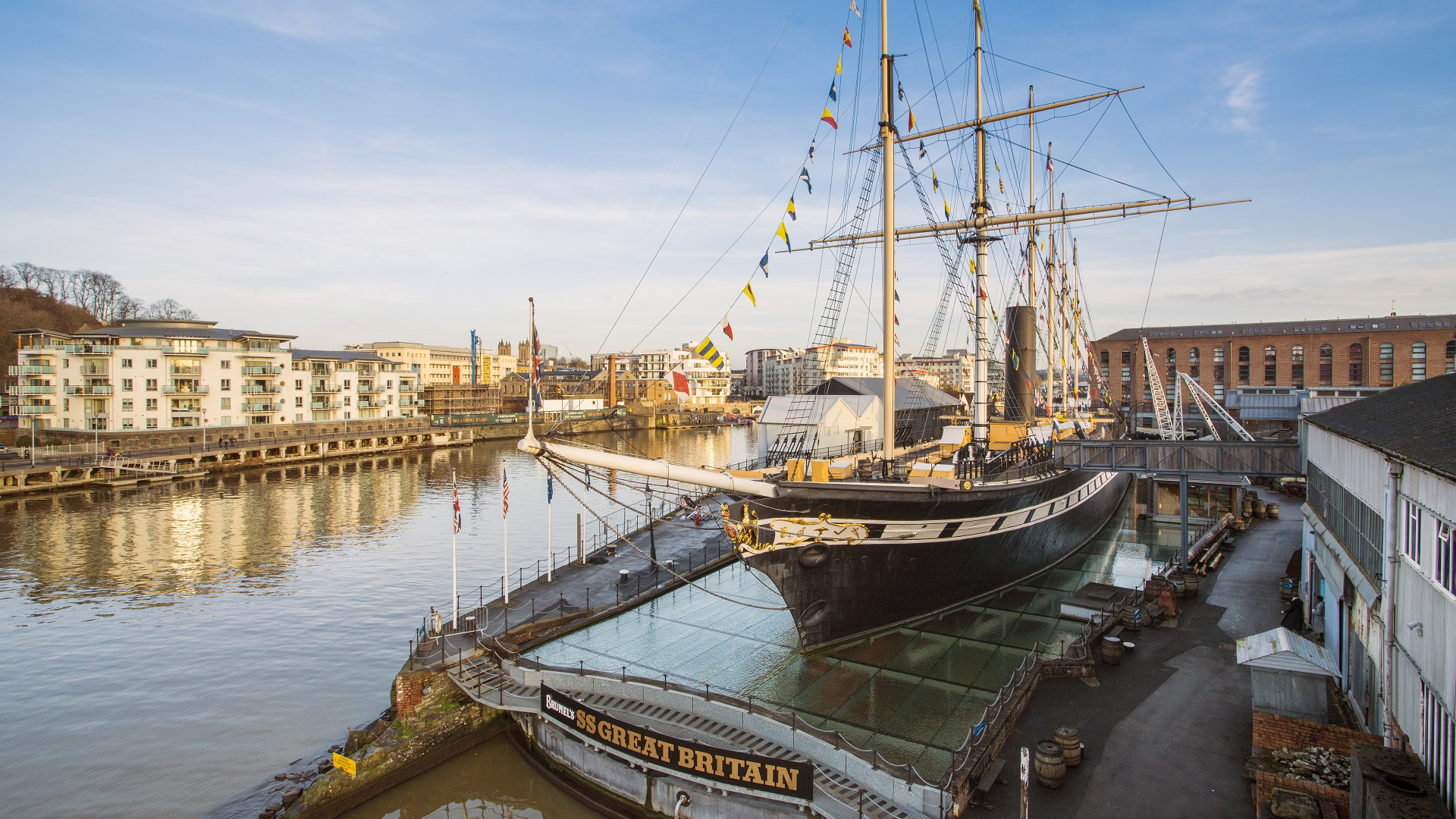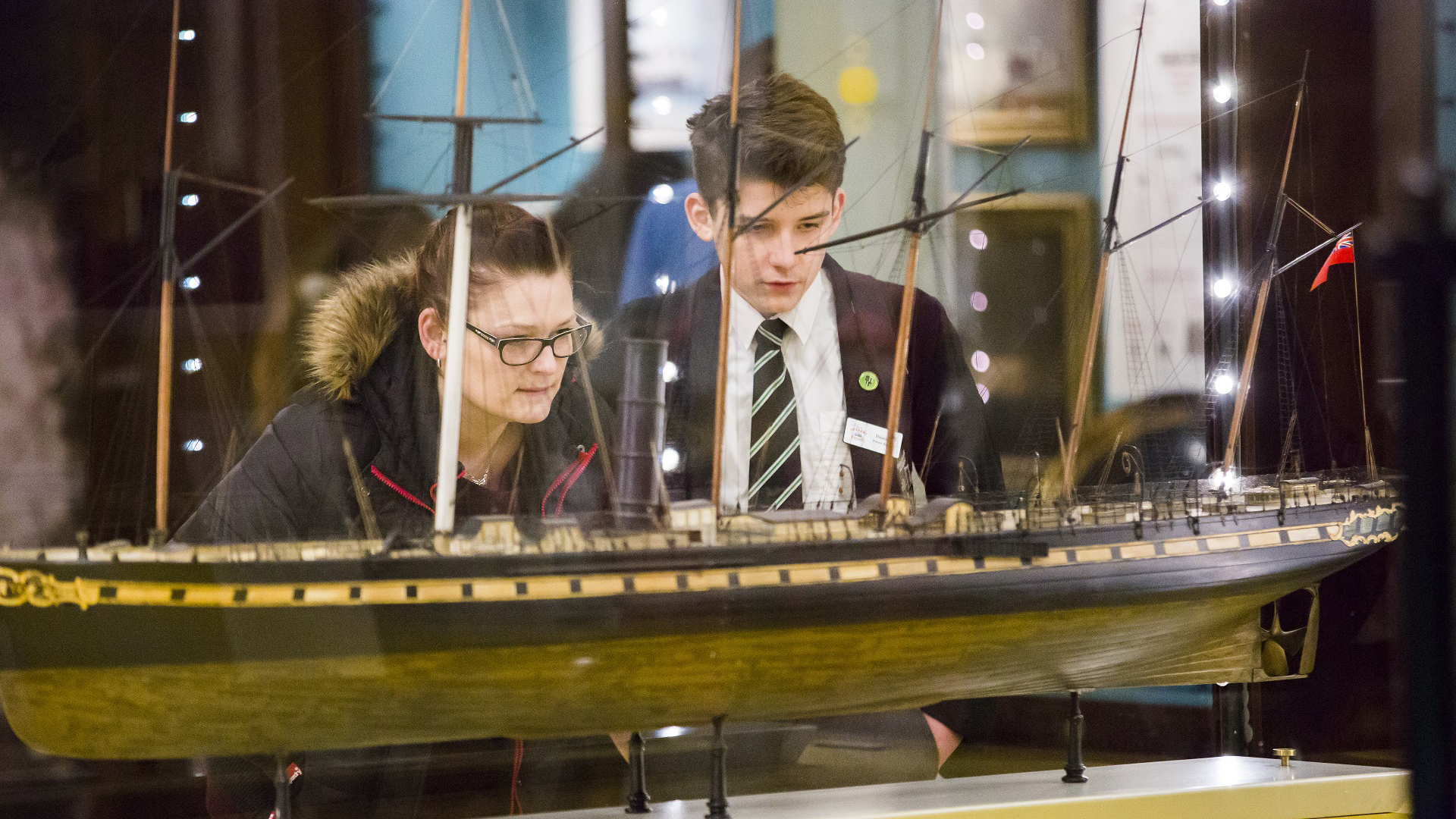SS Great Britain: the tech bringing a 19th century wonder to life
How new tech is helping to bring the past to life

Main image: The SS Great Britain is permanently on display on Bristol's harborside: Credit: Adam Gasson
It starts with a whiff of vomit, followed shortly by the fine aroma of horse droppings and a soupçon of sea air. These are the smells of a weeks-long voyage, across rolling seas and between continents with a cargo of livestock and a few brave humans who weren’t quite so prepared for some time on the waves as they first thought.
These odors are wafted throughout the airy confines of the SS Great Britain – a grand old ship sitting on the waterfront of Bristol in south-west England which once took people and their cargo to the New World and beyond – via ‘smell canisters’, topped up on a regular basis by a local craftsman.
“It makes the children laugh,” says Luke Holmes, Senior Interpretation Officer. “They run into a cabin and they can smell vomit, there’s a real fun element… it’s the smell of coal in the engine room, that extra layer of immersion and reality that really helps people to imagine themselves in the historic context. [Smell] is a really strong trigger to memory. Having fun and introducing humor is an important part of our exhibitions.”

Now a museum open to the general public, when the SS Great Britain was first launched in 1843 she was one of the most advanced ships of her time, later becoming the first iron steamship to cross the Atlantic, in a mere 14 days.
Designed by engineer extraordinaire Isambard Kingdom Brunel, she was also the largest ship of her kind, an a technological marvel of her time. Brunel repeated such grand feats throughout his life, with other ships such as the SS Great Western, and through other projects such as the building of the Great Western Railway between London and Bristol.
Innovative solutions to problems that had long confounded others characterized Brunel's work, and it's an approach the SS Great Britain museum has adopted wholesale.
Sign up for breaking news, reviews, opinion, top tech deals, and more.
Man and engineer: Being Brunel
The exhibition ‘Being Brunel’ is the newest addition to the museum, having been launched in early 2018. It focuses on being 'inside Brunel’s head' – that space under the grand stovepipe hat – both metaphorically and literally.
“Our CEO and one of our directors were walking to work, they thought about the film Being John Malkovich and that it would be amazing to be able to see out of the eyes of Brunel, of this famous Victorian engineer,“ says Holmes. “They took this idea literally, that’s why we have a two-story high head of Brunel that visitors can walk into.”
This is the entrance to the exhibit, and among the new displays is a relatively small section which characterizes the site’s approach to the adoption of new technology. There's a 3D-printed map, custom-made locally, onto which a projection plays, showing Brunel’s hand sketching the journey between London and Bristol. It's popular with visitors despite being relatively straightforward.

It's something which can be felt, and viewed – it offers a kid-friendly degree of interaction which isn’t possible with a physical display cabinet, as found elsewhere in the exhibition.
While it may be a simple form of experimentation, this out-of-the-box idea provides a simple way of putting across a story which wouldn’t be possible via another medium. According to the site, it was certainly difficult to source initially, but the payoff has proven to be worth the initial hurdles.
Technology in museums is increasingly being divided into three categories: virtual reality (VR), augmented reality (AR) and ‘mixed’ reality. VR is an entirely software-based experience, experienced through headsets and earphones, while AR involves information being superimposed on physical objects through headsets or displays to add further context. Mixed reality, meanwhile, is what is increasingly being adopted by museums and other educational institutions, and in a particularly bespoke way by the SS Great Britain.
Multiple realities
‘Mixed’ or rather what they call ‘Immersive’ reality means using traditional displays, with text and glass display cases, supplemented by soundscapes and sensory experiences. It places the technology out of sight, but never out of mind, adding texture that would otherwise not be possible – such as with the smell canisters and the map. The principle is that the technology is more effective for not obviously being technology.
Another example of this is the culmination of a project filming rats – the footage is used in such a way that it appears the rats are running through cupboards at certain points in the ship. The visitor in the present might be horrified, but this was a fact of life on board such a vessel, and these small details help to paint a larger picture and add to it being an experience as much as anything else.

“For us it is about looking at what our evidence base is, what our source base is and about how we can make that exciting and relevant,“ explains SS Great Britain's Head of Interpretation, Kate Rambridge. “Sometimes technology is a strong fit with that and can help us with what we want to achieve, other times we decide it is irrelevant.
“We never start with the technology; it’s always quite tricky to decide what new option is ready to be a commodity rather than a research project. People aren’t motivated to come and visit us because they want something high-tech.”
Perhaps the greatest testimony to this unwaveringly bespoke approach to design and implementation is the Brunel head itself. At two stories, it was a significant undertaking to plan and build; however this is no mere bust of a dead engineer.

The idea is to ‘see’ through Brunel’s eyes, reliving key junctures of his life, and this is achieved through something which can only be accurately described as ‘communal VR’. Visitors are sat at specific intervals in limited numbers within the cosy confines of the behatted tête du Brunel. Then prepared, the experience begins – with piped in ‘steam’ and more making this an experience to remember – though it is fixed perspective.
We are taken through the extraordinary risks he undertook in order to realize his vision – it's a highly visceral means by which to explore past events and is quite unique in its ambition at the moment. An important part of this is the group element, reacting as one, while it retains a key flavor of its own. No one else at the moment is exploring Brunel’s history in this way, and it shows what a combination of ‘low’ tech and a little vision can achieve.
A community-focused future
This emphasis on bespoke solutions does present problems, mainly with availability. The SS Great Britain has attempted to circumnavigate this by working with the local community.
“We’ve been doing a lot of research into new technologies,“ adds Holmes. “There’s really amazing stuff from local artists working on stuff like conductive ink and robotics. This is a really exciting time to be working in heritage.”
The SS Great Britain is a mature institution, with resources and time to figure out how it wishes to proceed. For smaller, and other, museums wishing to ride the tech wave to success, life is becoming easier however.
As more and more visitors carry pocket-rocket smartphones in and out of exhibits, so interaction with technology becomes more ubiquitous, with screens and more becoming ‘invisible’ rather than an attraction in themselves.
But the SS Great Britain is leading the charge in finding new ways to delight and inspire, whether through high-tech gizmos or cunningly placed vomit canisters – as long as it adds to the immersion, they'll give it a go.
TechRadar's Next Up series is brought to you in association with Honor

Sean is a Scottish technology journalist who's written for the likes of T3, Trusted Reviews, TechAdvisor and Expert Reviews.